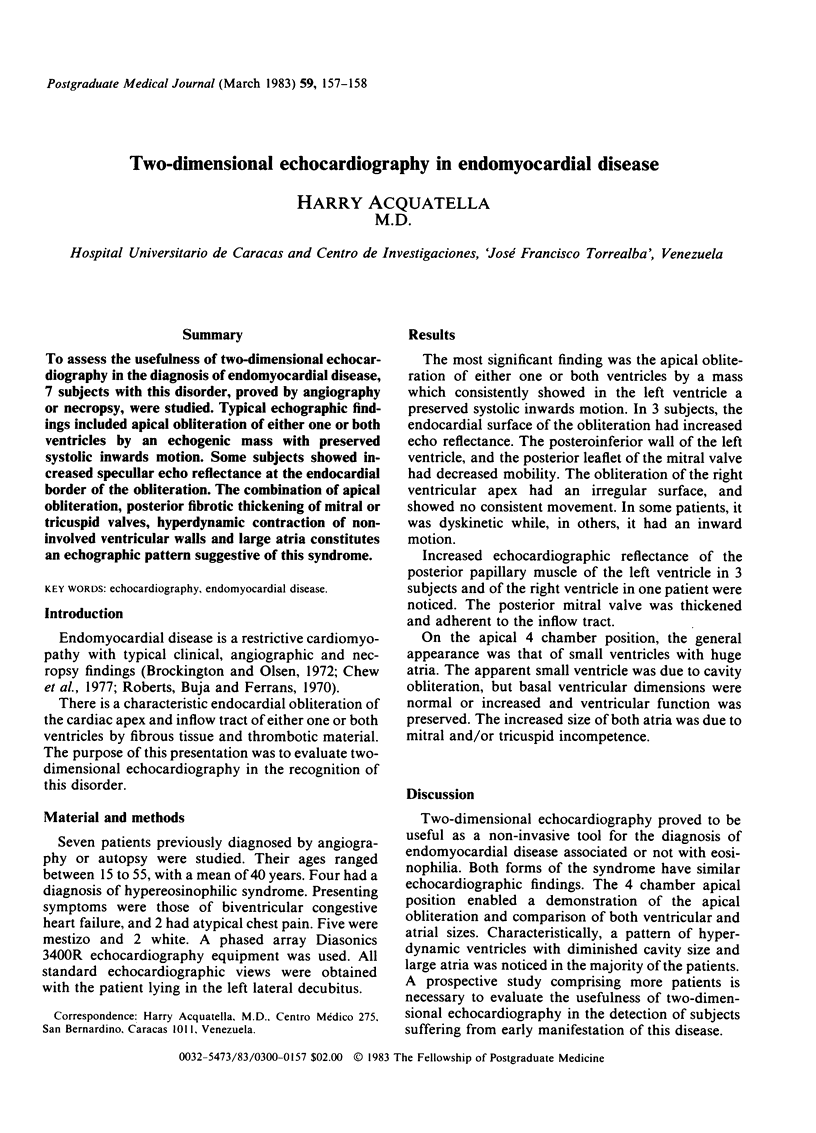Abstract
To assess the usefulness of two-dimensional echocardiography in the diagnosis of endomyocardial disease, 7 subjects with this disorder, proved by angiography or necropsy, were studied. Typical echographic findings included apical obliteration of either one or both ventricles by an echogenic mass with preserved systolic inwards motion. Some subjects showed increased specullar echo reflectance at the endocardial border of the obliteration. The combination of apical obliteration, posterior fibrotic thickening of mitral or tricuspid valves, hyperdynamic contraction of noninvolved ventricular walls and large atria constitutes an echographic pattern suggestive of this syndrome.
Full text
PDF

Selected References
These references are in PubMed. This may not be the complete list of references from this article.
- Brockington I. F., Olsen E. G. Eosinophilia and endomyocardial fibrosis. Postgrad Med J. 1972 Dec;48(566):740–741. doi: 10.1136/pgmj.48.566.740. [DOI] [PMC free article] [PubMed] [Google Scholar]
- Chew C. Y., Ziady G. M., Raphael M. J., Nellen M., Oakley C. M. Primary restrictive cardiomyopathy. Non-tropical endomyocardial fibrosis and hypereosinophilic heart disease. Br Heart J. 1977 Apr;39(4):399–413. doi: 10.1136/hrt.39.4.399. [DOI] [PMC free article] [PubMed] [Google Scholar]


